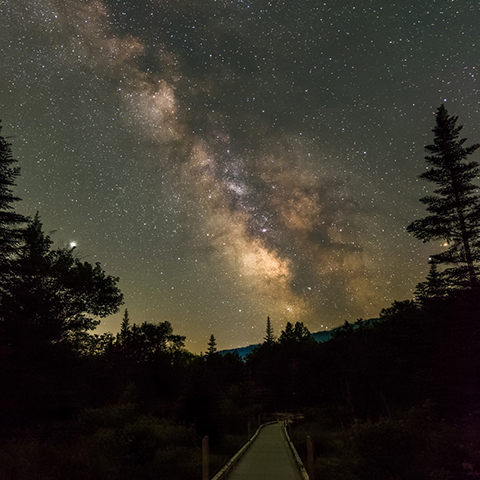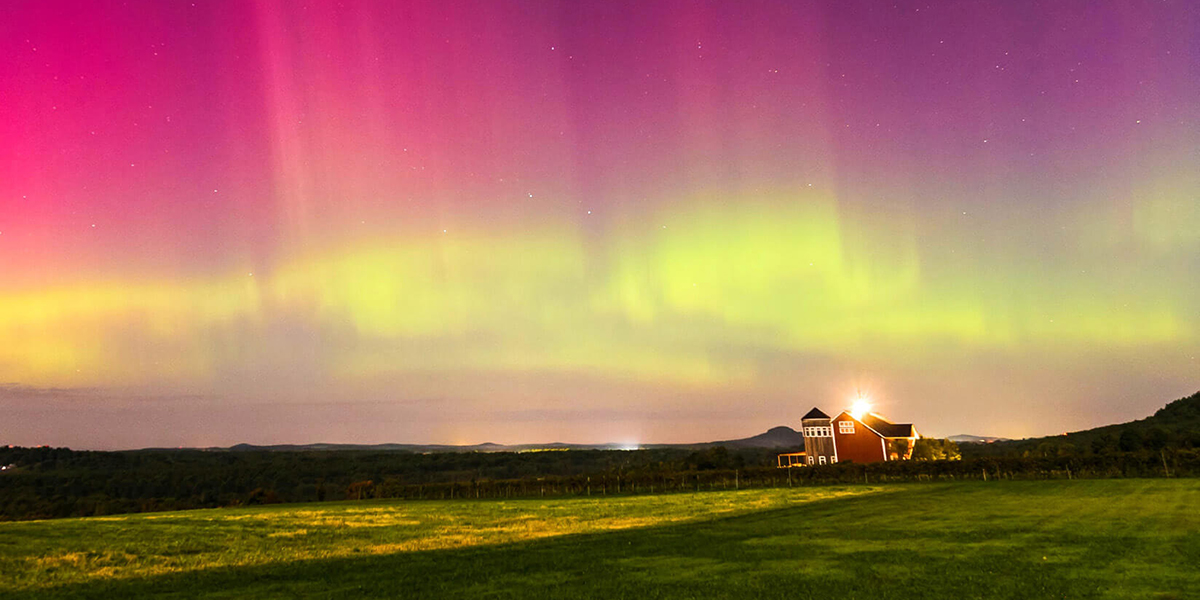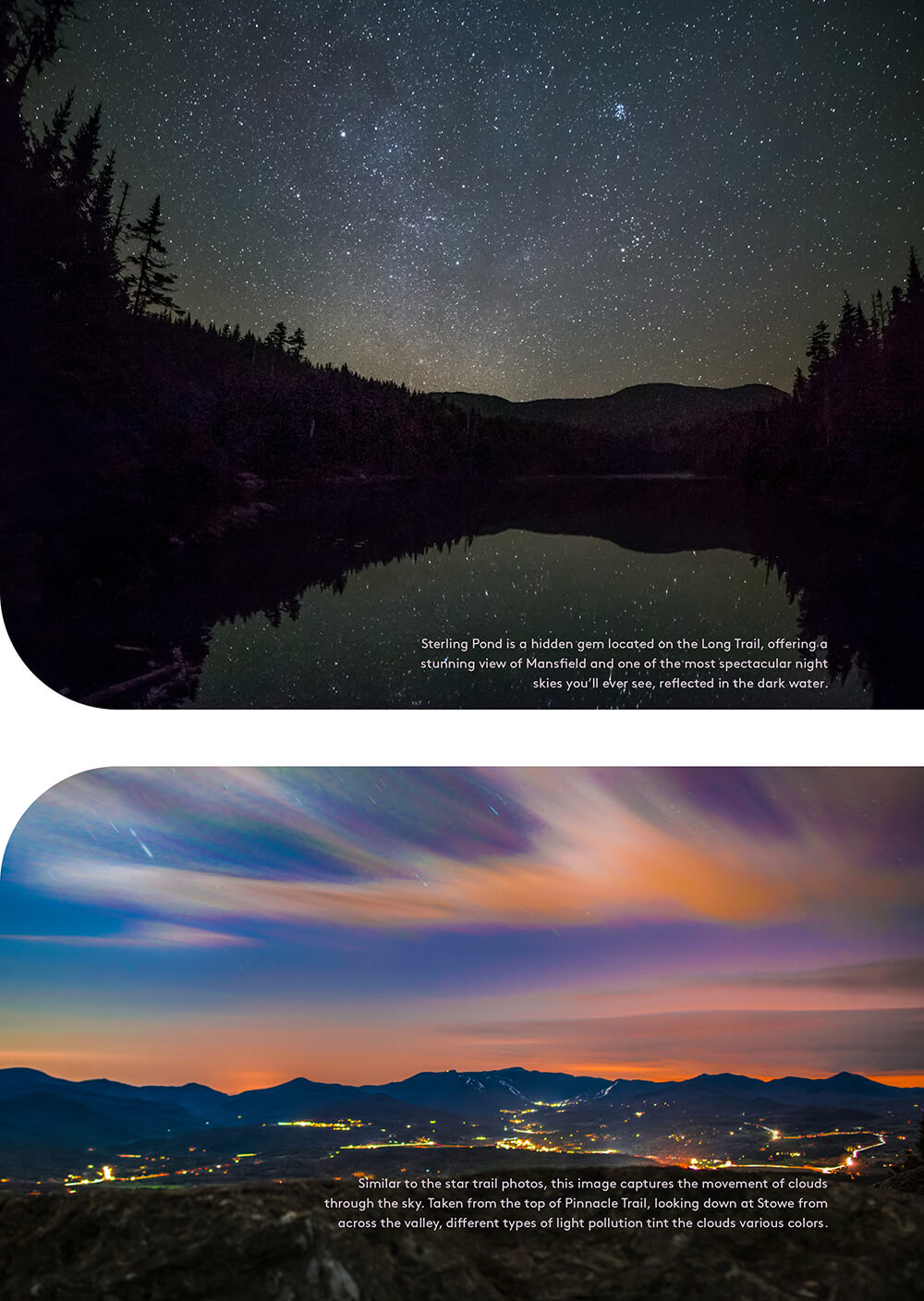By Brian Drourr

3 Can't-Miss Celestial Events
- The Perseid meteor shower is a summer highlight. Peaking the night of August 12, you can expect upwards of 100-150 shooting stars per hour. It's most visible between 12-3 a.m. To orient yourself, use a night sky app to locate the constellation Perseus, where the meteors originate.
- We are in a period of enhanced solar activity called solar maximum, which increases the likelihood of Northern Lights in Vermont. The elusive Lights often appear with very short notice. Check out @Darkskychaser on Instagram or the app SpaceWeatherLive for alerts.
- The Delta Aquariids are a less prolific but sometimes more brilliant meteor shower, radiating from the constellation Aquarius. With larger particles, you don't get as many shooting stars (20- 30 an hour), but they tend to be a beautiful vivid green. Mark your calendar for the peak, July 28-30.
Stargazing Secrets
Check your local weather. Head out on a clear, cloudless night. Stick within a week or two of the new moon for the darkest skies and best visibility.
- In Vermont, the Milky Way can be seen between mid-April through the end of October. Its galactic center rises in the southern sky and stretches overhead to the north.
- Use a night sky app like Star Walk on Apple or Steleraum on Android to help identify what you are seeing. → You don't need fancy equipment to take stunning photos. Put your smartphone on a sturdy tripod (you want as little movement as possible to take sharp images) and turn on the camera. It should go into astrophotography mode automatically after 60 seconds (a longer exposure mode that allows you to take photos in the dark).
- Find the best star-gazing locations in your area using darkskymap.com.
- The Northern Lights aren't nearly as vivid when viewed with the naked eye, and may appear as a grayish-green or maroon haze. The best way to detect them is via your peripheral vision at first, which is more light sensitive. They appear much more brilliant through a camera, which can absorb a wider range of color wavelengths.

Clear Skies Ahead
Head to one of these picturesque spots for prime stargazing.
BARNES CAMP (easy)
Park at the base of the Notch in Stowe. There is a short boardwalk through an alpine wetland. To the south, you'll get a nice Milky Way shot. The north faces up into the Notch—look out for possible Aurora.
TOP OF THE NOTCH (moderate)
Park in the lot at the summit of the Notch, by the giant glacial boulders. Gaze up through the tree canopy and into the Milky Way. You can scout out alternate positions around here, but be careful of drop offs and gaps between the rocks.
STERLING POND TRAIL (difficult)
Park in the lot at the summit of the Notch, cross the street, and head up the Sterling Pond Trail. At the top, you have the choice to go left to the pond or right to Spruce Peak. Both offer amazing vantage points for night sky viewing. This hike is very steep and takes about an hour, so come prepared.
BACK ROAD ADVENTURE
Get lost on Vermont's country roads. Pleasant Valley Road in Underhill is widely known as being one of the most scenic back roads in the state. You can see the entire ridgeline of Mansfield, set off with an iconic red barn, and there is minimal light pollution. Have fun and explore—just be safe on dark streets and respectful of private property.

Image 1 Written Description: Sterling Pond is a hidden gem located on the Long Trail, offering a stunning view of Mansfield and one of the most spectacular night skies you'll ever see, reflected in the dark water.
Image 2 Written Description: Similar to the star trail photos, this image captures the movement of clouds through the sky. Taken from the top of Pinnacle Trail, looking down at Stowe from across the valley, different types of light pollution tint the clouds various colors.
